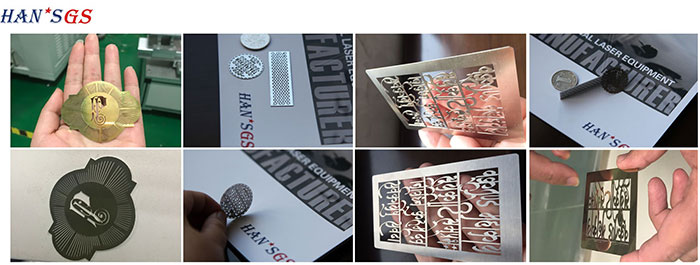0HANS GS LASER

 中文
中文 English
English France
France العربية
العربية русский
русский español
español português
português srpski језик
srpski језик Việt Nam
Việt Nam
Language

Language
 中文
中文 English
English France
France العربية
العربية русский
русский español
español português
português srpski језик
srpski језик Việt Nam
Việt Nam
Address:No.72,Optical valley Avenue, East Lake High-Tech Development Zone,Wuhan.P.C:430223
Tel:+86-27-8792 4929
Fax:+86-27-8792 4929
Whats app:+86-18717170727
Skype:sales_hansgs@outlook.com
Email:hansgs@hansgslaser.com
2018-03-16
It is necessary to master and solve several key technologies of laser cutting machine with high cutting precision or larger thickness. Focus position control technology is one of them. One of the advantages of laser cutting is that the energy density of the beam is high, so the focal spot diameter is as small as possible so as to produce a narrow slit. The smaller the focal depth of the focus lens is, the smaller the focal spot diameter is. For high quality cutting, the effective focal depth is also related to the diameter of the lens and the material being cut. Therefore, the control focus is very important to the position of the surface of the cut material.

Because
the laser power density has a great influence on the cutting speed, the
choice of the lens' focal length is an important problem. The laser
beam focus spot size and focal length is proportional to the beam
through a short focal length lens focus spot size is very small, high
power density, good for cutting materials; but it is a very short focal
depth, small adjustment margin, generally applicable to the high-speed
cutting thin type material. The long focal length lens has a wide focal
depth, so long as it has enough power density, it is more suitable for
cutting thick workpiece.
The relative position of the focus and the
surface of the workpiece is particularly important to ensure the quality
of the cutting after determining the lens with which the focus is used.
Because of the highest power density at the focus, in most cases, the
focus position of the cutting is just on the surface of the workpiece,
or slightly below the surface. During the whole cutting process, it is
important to ensure that the relative position of the focus and the
workpiece is constant to obtain the stable cutting quality.
When the
focus is in the best position, the minimum cutting, the highest
efficiency, best cutting speed can obtain the best cutting results. In
most applications, the focus of the beam is adjusted to just under the
nozzle. The surface spacing between the nozzle and the workpiece is
about 1.5mm. The following three aspects are used to analyze the
different choice of the cutting focus of the laser cutting machine
because of the different materials and requirements.
1, The cutting focus is on the surface of the workpiece
This
way has also become the 0 focus, generally seen in SPC, SPH, SS41
cutting, the focus of the use of the time machine in close to the
surface of the workpiece, the workpiece under the pattern of surface
smoothness is not the same, generally close to the focus of the cutting
surface is relatively smooth, while cutting away from the focus the
surface is rough. This model should be based on the technical
requirements of the upper and lower surfaces of the actual application.
2, The cutting focus is in the workpiece
This
way also becomes a positive focal length. When you need to cut the
workpiece for stainless steel or aluminum steel plate, it is often used
to cut the pattern inside the workpiece. But one drawback of this way is
that because the focus principle cuts the surface, the cutting
amplitude is bigger than the cutting point on the workpiece surface. At
the same time, the cutting air flow needs to be large, the temperature
is enough and the cutting time is a bit longer. So when you choose the
material of the workpiece mainly for stainless steel or aluminum
material hardness of the material when the material is selected.
3, The cutting focus is on the workpiece
In
this way, we also become a negative focus, because the cutting point is
not located on the surface of the cutting material, nor on the inside
of the cutting material, but on the top of the cutting material. This
method is mainly used in material with high cutting thickness. This way
focuses on cutting the material above, mainly because the thickness
needed for the thick plate is large, otherwise the oxygen transported by
the nozzle is very easy to appear, which leads to the lack of cutting
temperature. One drawback of this approach, however, is that the cutting
surface is relatively rough and not too solid for high precision
cutting.